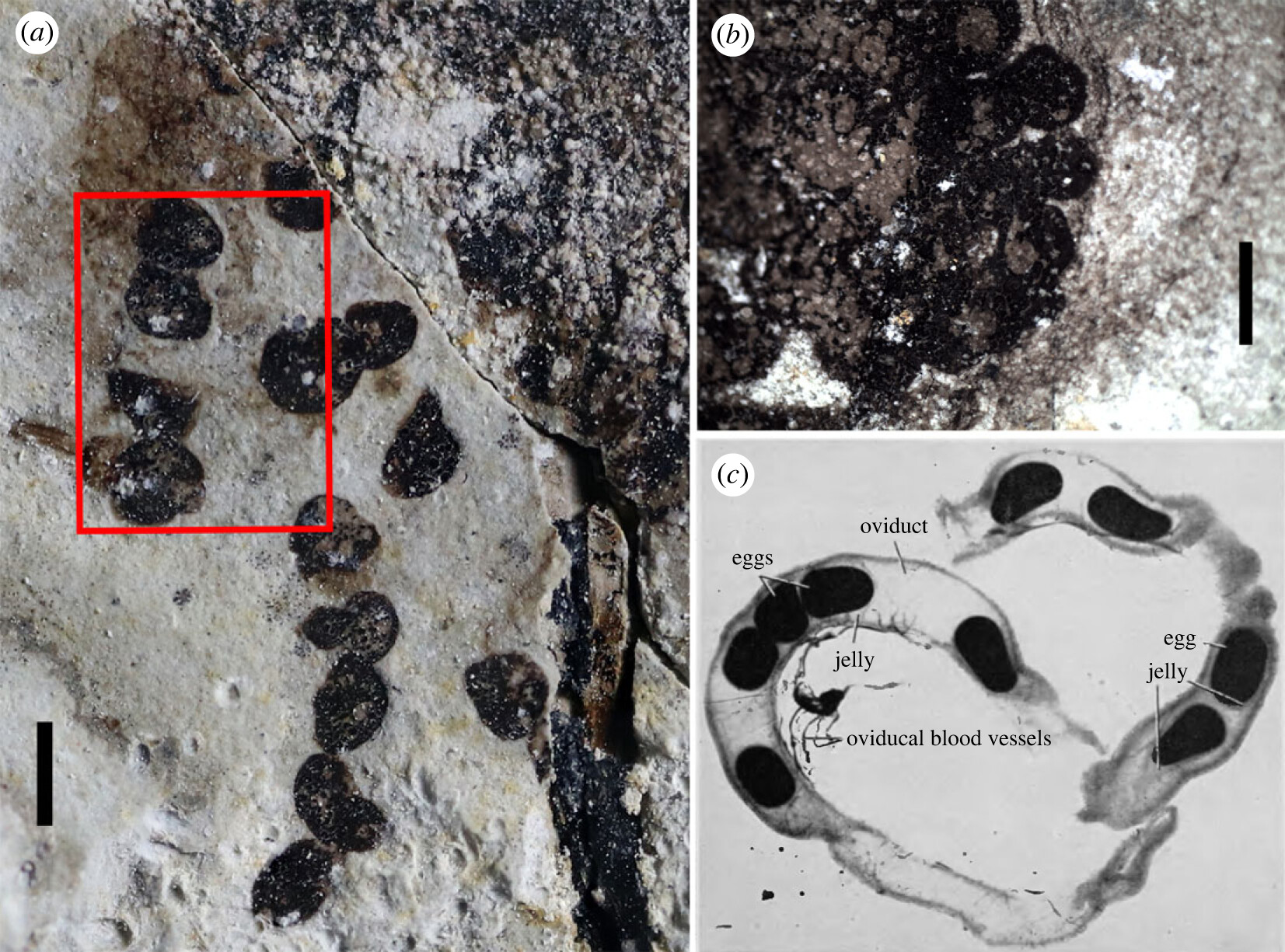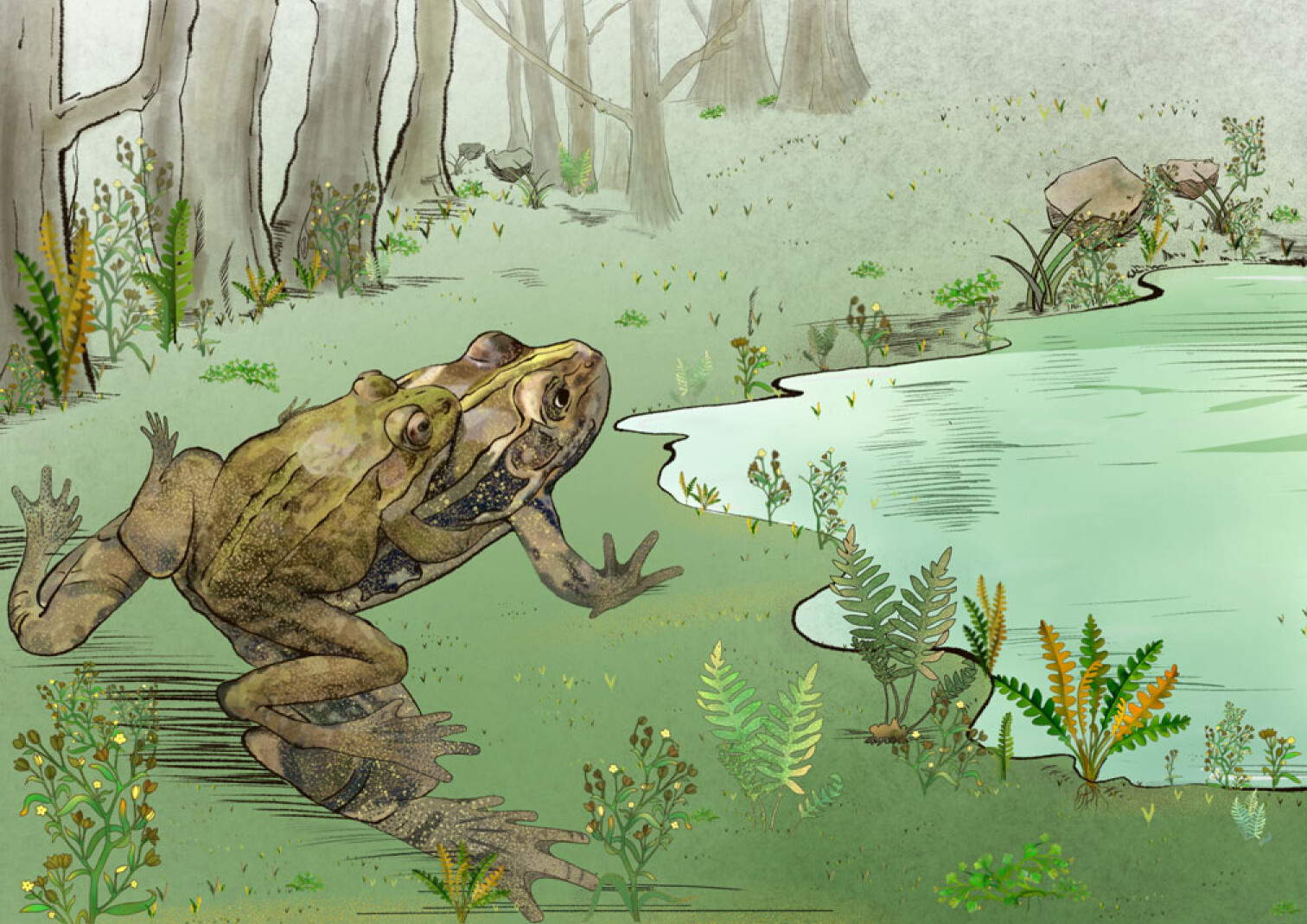Frogs have a unique distinction among all living land vertebrates. There are over 6,000 living species of frogs known to scientists, as well as countless extinct species — and yet they all contain roughly the same skeletal body plan. While this is convenient in terms of helping experts classify frogs, it also makes it difficult to understand the biology of skin, inner organs and other soft tissues of extinct frog species. Yet a recent study from the journal Proceedings of the Royal Society B revealed that at least one frog fossil has been discovered with some of the soft tissues intact. Even more intriguing, the frog was clearly gravid, or pregnant with eggs.
 Anuran eggs within body cavities of the fossil frog Gansubatrachus qilianensis (paratype JQ-HX-QW-02) and extant ranid frog. (a) G. qilianensis, enlarged view of left red box in figure 2a, showing fossil eggs arranged in columns and likely enclosed within oviduct; (b) G. qilianensis, enlarged view of right red box in figure 2a showing cluster of eggs, possibly within ovary; (c) passage of eggs through the paired oviducts in the extant frog Rana pipiens (Image revised from the Biodiversity Heritage Library. Contributed by MBLWHOI Libraries (Baoxia Du et al., Royal Society B: Biological Sciences, 2024 )
Anuran eggs within body cavities of the fossil frog Gansubatrachus qilianensis (paratype JQ-HX-QW-02) and extant ranid frog. (a) G. qilianensis, enlarged view of left red box in figure 2a, showing fossil eggs arranged in columns and likely enclosed within oviduct; (b) G. qilianensis, enlarged view of right red box in figure 2a showing cluster of eggs, possibly within ovary; (c) passage of eggs through the paired oviducts in the extant frog Rana pipiens (Image revised from the Biodiversity Heritage Library. Contributed by MBLWHOI Libraries (Baoxia Du et al., Royal Society B: Biological Sciences, 2024 )
The authors explain that frog fossils with discernible soft tissues are "scarce." In the case of this fossil — dubbed with the clunky moniker JQ-HX-QW-02 — the experts observed that the frog did not seem to have died either of old age or being preyed upon, and that the sheer quantity of eggs indicates the female frog was neither starving nor hibernating. So how did she die?
"The most likely cause of death for the female represented by JQ-HX-QW-02 is drowning or exhaustion in relation to mating, constituting the first Mesozoic case of death linked to mating behavior," the authors explain. "This latter cause of death has also been considered to be a major cause of death in some Cenozoic anurans [frogs]."
Last year a study in the journal PLOS One revealed the existence of the world's smallest fanged frog, the Limnonectes phyllofolia. Measuring at 1.2 inches (30 millimeters) from vent to snout, this frog indigenous to Sulawesi Island has a pair of seeming "fangs" that jut out from its lower jawbone.


